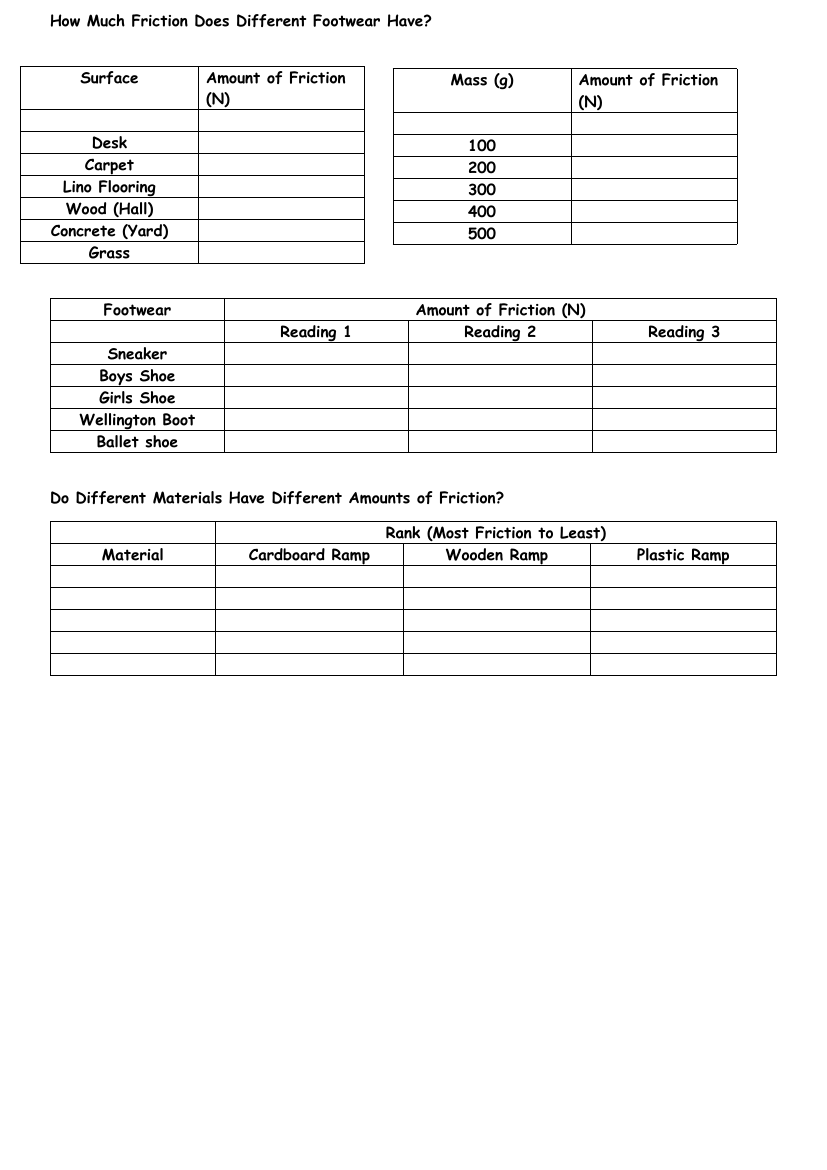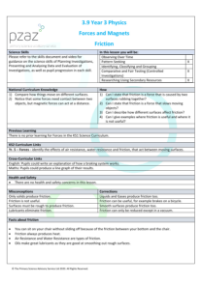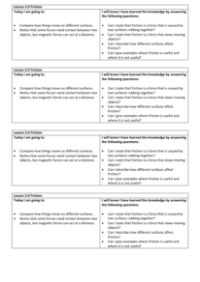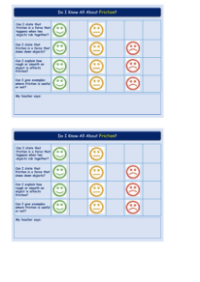Friction - Results Tables

Science Resource Description
Exploring the concept of friction through practical investigation, the study examines how different materials and footwear affect the amount of friction generated. Results tables are set up to record the frictional force in Newtons (N) across various scenarios. The first part of the study looks at the friction produced on different surfaces such as desks, carpets, lino flooring, wood, concrete, and grass, and how this friction changes with varying masses placed on these surfaces, ranging from 100g to 500g. This helps to determine which material offers the most resistance to movement and, conversely, which allows for the smoothest passage.
Another aspect of the investigation focuses on footwear, comparing the frictional force generated by different types of shoes, including sneakers, boys' shoes, girls' shoes, Wellington boots, and ballet shoes. Multiple readings are taken for each type of footwear to ensure accuracy. The results are ranked from the most to the least friction provided by each shoe type on various ramps made of cardboard, wood, and plastic. This data is crucial for understanding how the design and material of footwear can influence grip and stability on different surfaces.






